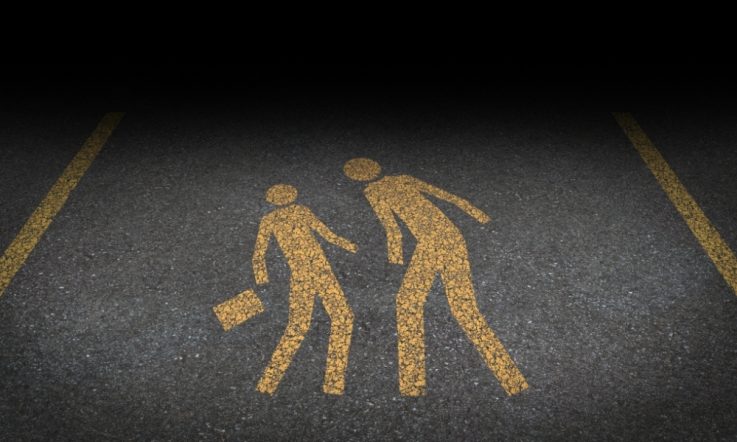The term ‘teacher wellbeing' has become quite loaded in recent times, particularly with recent research highlighting the substandard health and wellbeing of school leaders, and the implications for all school staff and broader school communities.
The Australian Principal Occupational Health, Safety and Wellbeing Survey (Riley, 2017) highlights several worrying statistics:
- principals experience very high levels of job demands (1.5 times the general population), emotional demands (1.7 times) and emotional labour (1.7 times);
- this is correlated with higher levels of burnout (1.6 times higher), stress symptoms (1.7 times higher), difficulty sleeping (2.2 times higher), cognitive stress (1.5 times higher), somatic symptoms (1.3 times higher) and depressive symptoms (1.3 times higher); and,
- during term, 55 per cent of principals work upwards of 51-56 hours per week, and 27 per cent work upwards of 61-65 hours per week. (Riley, 2017)
Dr Philip Riley's report includes a series of recommendations that governments, employers and unions can adopt to make things better, but good mental health and wellbeing can also be addressed by individual educators, in small but important ways, to improve what he refers to as one's ‘personal capital'.
The difficulty is that, as humans, we are not necessarily set up to be regularly focused on our wellbeing. We have automatic tendencies to focus on threats and rewards, which sometimes have nothing to do with long-term and sustainable mental, emotional, spiritual and physical health. We have fantastic, highly embedded survival mechanisms (such as ‘fight', ‘flight' or ‘freeze') that help us to respond to threats, yet these mechanisms can be triggered whether the perceived threats are threats to our life or lifestyle.
I'm a registered psychologist who has focused on wellbeing in workplaces and have worked with many educators for a considerable period of time. Reading the results of Riley's survey and observing the systems, environments and day-to-day challenges faced by those working in our schools, it can be readily interpreted that many of these challenges can easily be perceived by school staff as threats, therefore undermining their wellbeing if they respond with classic survival mechanisms.
Here are three simple tools that can quickly enhance your wellbeing. When combined with exercise, a healthy diet and good sleep patterns, these can improve a school educators' wellbeing markedly.
Breathing techniques
There are many breathing techniques out there, all of benefit to those that choose to implement them. Deep breathing dissipates some of the energy created by our classic survival mechanisms, increases our oxygen levels and relaxes our body. Breathing techniques such as Progressive Relaxation can be hugely helpful, and can be used for a minute or two in your class or staffroom, even at the start of the day.
How it is done: Close your eyes. Focus on tensing and relaxing each muscle group for two to three seconds, up to five seconds each. Start with your feet and toes, move your way up the body, maintaining deep, slow breaths. Breathe in through your nose while you tense your muscles and breathe out through your mouth on release.
Mindfulness practices
Mindfulness is one of the most effective ways to increase productivity, reduce stress, increase self-awareness, enhance emotional intelligence and reduce unhelpful emotional, cognitive, and behavioural processes – our overall wellbeing. It is a brain tool that produces lasting changes in brain and cognitive function, significantly affecting the way stimuli are processed and perceived. Mindfulness is essentially training our minds to pay attention in a particular way. It is the non-judgemental observation of the ongoing stream of information bombarding our brains.
The more we practice any of the following exercises, which again can be done in a minute or two, the more likely we are to develop our ability to stay in the present moment, focus and cancel out some of that inner chatter that can create perceived threats for us.
Clock watching exercise: Sit in front of a clock or watch that you can use to time the passing of one minute. Your task is to focus your entire attention on your breathing, and nothing else, for the full minute. Have a go – do it now.
Mindful eating: This involves sitting down at a table and eating a meal without engaging in any other activities – no newspaper, book, TV, radio, music or talking. Now eat your meal paying full attention to which piece of food you select to eat, how it looks, how it smells, how you cut the food, the muscles you use to raise it to your mouth, the texture and taste of the food as you chew it slowly. You may be amazed at how different food tastes when eaten in this way and how filling a meal can be. This technique is also very good for digestion.
Mindful walking: While walking, you concentrate on the feel of the ground under your feet and your breathing. Just observe what is around you as you walk, staying in the present. Let your other thoughts go, just look at the sky, the view, the other walkers; feel the wind, the temperature on your skin; enjoy the moment.
Framing key questions
We often ruminate about the past, and about what might happen in the future. The challenge here is that we cannot control what happened in the past and what happens in the future can be anyone's guess, and therefore not in our control. What we can control is how we choose to perceive an event or stimulus, and how we choose to ‘show up' for future events, even in the moment.
A very powerful tool we can easily use to bring ourselves back to what we can control is through framing helpful key questions. Questions activate a specific area of the brain that attempts to seek the answer; we are ‘hardwired' to seek the answers of the questions asked of us and those questions we ask ourselves.
Brief social experiment: test out your ‘hardwiring' yourself. Find someone to have a one minute conversation with asking questions – questions only (no answers).
How did the conversation go? Usually around in circles. What was the first thing you wanted to do when the other person asked you a question? Answer it of course. Questions activate the brain and see us automatically seeking out the answer.
This is where the power of questions lie, using something we are ‘hardwired' to do. Helpful questions are essential here: questions that will help me focus on what I can control, rather than on something I can't control. If I ask an unhelpful question, my brain simply goes looking for the answer. Once it's found, that is what I now pay attention to. If I ask an unhelpful question, I am now focused on unhelpful things – more often than not, on things I cannot control.
Helpful questions include: What can I control here? What am I responsible for here? What could I have done differently? What will I do differently next time? What can I learn from this event?
When we take control and responsibility for our lives we increase our self-worth and happiness, our overall wellbeing and our life and job satisfaction. It is the small, everyday questions that drive our perceptions of control and influence the results that we get.
In summary, we are habitual creatures. Our brain already uses over 20 per cent of our body's energy supply (teachers would probably argue that their job entails using considerably more!), yet weighs on average only 2 per cent of body mass. Our brain does not want to use any more of this precious energy.
When we use our executive functioning, or frontal cortex (otherwise known as our ‘thinking brain') we expend energy, so creating habits means that we no longer need to think about it – great news for our brain and body. When practiced regularly and slotted into daily routines, the three tools above can also become habits.
References
Riley, P. (2017). The Australian Principal Occupational Health, Safety and Wellbeing Survey: 2016 Data. Melbourne, Australia: ACU.
As an educator, do you regularly set time aside to focus on your own wellbeing? How could you incorporate this into your daily or weekly routine?



